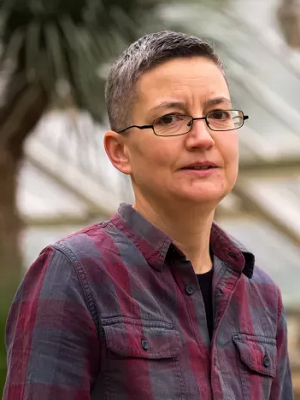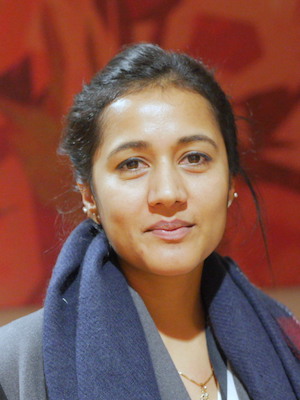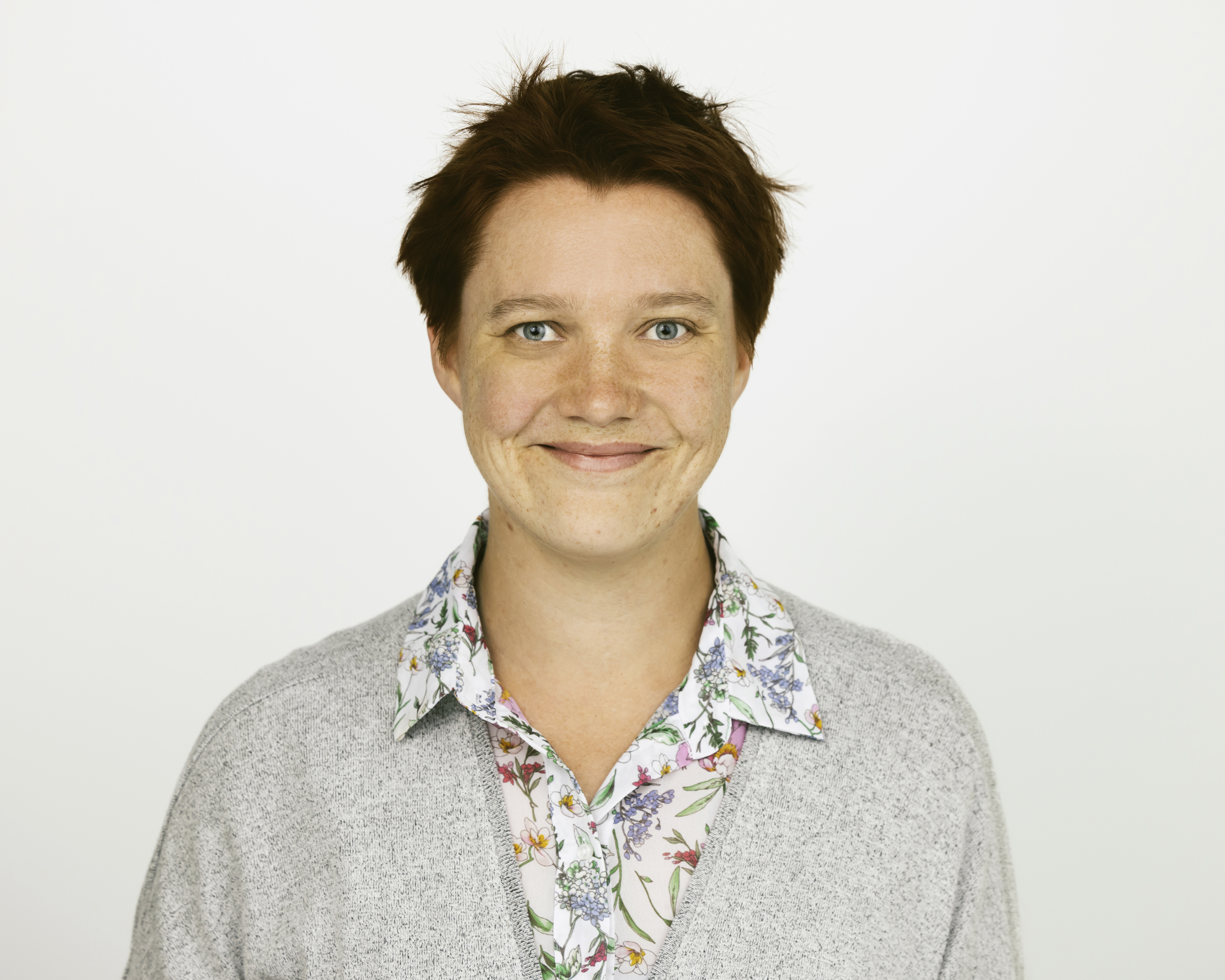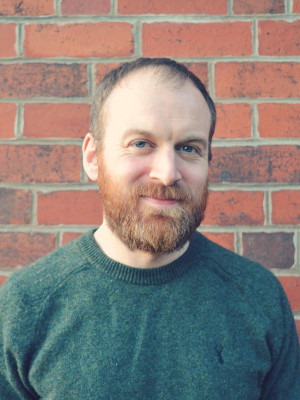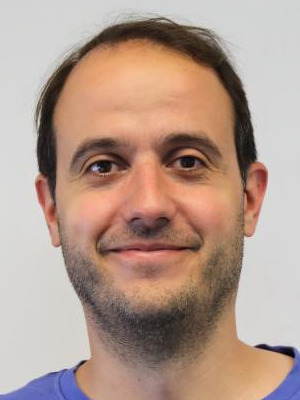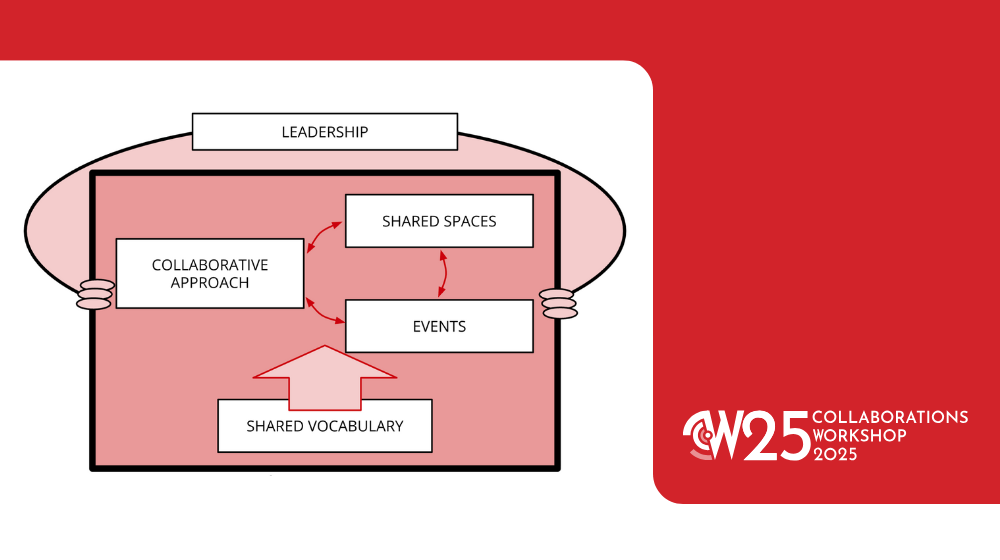| This blog is part of the Collaborations Workshop 2025 Speed Blog Series. Join in and have a go at speed blogging at Collaborations Workshop 2026. |
The fragmented nature of training materials distributed across research institutions and within project repositories often leads to duplicated resources, ineffective practice, and wasted storage, contributing to the lack of sustainability of the materials themselves. Furthermore, opportunities are missed for reusing domain-agnostic materials in additional disciplines, for example, research software management written to support life sciences may be relevant for all.
In this blog post, we describe five strategies or general principles to help foster cross-disciplinary activity in skill-sharing communities.
Establish a shared vocabulary
To foster effective cross-disciplinary activity, it is essential for communities to establish a shared vocabulary which reflects their different contexts, audiences, disciplinary practices, and career stages. For instance, the term ‘science’ in American English is often used in a way that aligns more closely with how ‘research’ is used in British English. However, such terms can also be unintentionally exclusionary or carry biases in terms of hierarchies that favour one discipline or method over the other. In German and Dutch, for example, the concept of Wissenshaft or wetenschap, which translates as ‘knowledge-ship’ or ‘knowledge craft’, covers not only the natural and social sciences but also the arts and humanities, placing them on an equal footing. Similarly, “data” might sound neutral, but not to humanities scholars. Furthermore, programming languages each have their own unique features, even though they are predominantly based on English, which presents its own set of challenges.
One way to address these challenges is to involve people who are embedded within different research subcultures who can act as champions or community brokers. These individuals understand the specific values, practices, and terminology of their respective communities and can help bridge gaps in communication. Moreover, they are able to articulate how different skills and different ways of working can complement each other. By ‘speaking both languages’, they are able to promote mutual understanding, translate concepts and skills across domains, and facilitate more inclusive and effective exchange. This role is therefore essential, especially in interdisciplinary projects, where a lack of understanding can hinder effective collaboration and negatively affect the project’s outcomes.
Effective and intentional event design
Different types of events, from structured training to unconferences and informal community spaces, provide multiple entry points for people to learn and contribute in a cross-disciplinary setting, regardless of their background. Designing events that facilitate both formal and informal spaces allows learners to be exposed to new concepts and exchange ideas from their respective fields. This exposure helps build an understanding of how general skills, like data management, reproducibility, or visualisation, can be applied across disciplines, from bioinformatics to the humanities. Engaging people in groups and encouraging collaborative documentation can also help build shared training materials and resources that are useful across various communities.
Let's walk through a learner's journey to see how different cross-disciplinary events can contribute to continuous learning:
- Gaining Foundational Skills: A researcher new to data science might start with The Carpentries training. Offered in a supportive group setting, these short-format workshops provide foundational programming and data skills, empowering new learners to continue their journey.
- General Discussions and Problem-Solving: As they apply their new skills, they might join The Turing Way's "collaborations cafés" to discuss best practices like version control, code review, and data management. They could even participate in a "Book Dash" to document skills they want their team to learn, collaborating with people from different disciplines.
- Local Engagement: To maintain momentum, they could start their own "Hacky Hours" or Advent of Code meetups with others in their department. These regular gatherings create a safe, less intimidating space to share tools, learn about new packages, or even reproduce a recent data analysis method.
- Connecting with the broader Ecosystem: Finally, the group might apply to join OLS’s Open Seeds training program or collectively attend an event like the annual SSI Collaboration Workshop or RSECon to connect with a wider community. This provides exposure to new topics, tools, and approaches, further strengthening their skills and network in a cross-disciplinary environment.
This mix of organised and casual formats normalises the process of acquiring new skills even beyond a traditional training format or classroom environment.
Leadership and diversity
To successfully foster cross-disciplinary activity, a skill-sharing community requires strong, intentional leadership. This includes both officially designated leaders, responsible for building and supporting communities, and "open leaders", those who organically step up to act as stewards, connecting new learners with experts and resources. These leaders, by acting as bridges between different groups and often diverse communities, help share and translate skills across disciplinary “languages.”
Effective leaders also actively champion diversity within their communities and teams. While community-building may not be in everyone's job description, a good leader encourages an environment where community thrives. A crucial part of this is creating intentional pathways for different kinds of open leadership. This supports a variety of roles that bring diverse perspectives from across different disciplines into the community's leadership structure.
Over the last few years, a variety of Research Technical Professional (RTP) roles, such as research community managers, technical trainers, and data stewards, have emerged in addition to the established Research Software Engineer (RSE) role (discussed in this policy briefing by Karoune and Sharan). These roles expand on the work of the RSE community and are spreading to departments beyond research computing. By acting as open leaders, individuals in these roles provide specialised expertise and model best practices that their community members can adopt.
Regardless of their specific role, leaders and role models should focus on removing barriers to collaboration and co-creation. This will encourage more people to move beyond simply consuming content and to become active participants (as illustrated by CSCCE). By bringing expertise from different backgrounds, these leaders can act as catalysts, building a thriving, cross-disciplinary community right where they are.
Shared spaces for collaboration
Traditional, synchronous meetings often fail to accommodate global teams or varied schedules, limiting engagement. Furthermore, without dedicated, persistent forums, valuable insights can be lost after events, and the crucial space for constructive disagreement, rapid iteration, and "failing fast" – essential for innovation – is often absent. This lack of ongoing, accessible shared environments can impede the organic development of trust and sustained interdisciplinary relationships. Communities typically have preferences for particular shared spaces, which don’t necessarily map across disciplines.
To address these challenges, community managers must receive and provide specific training for the effective use of shared digital spaces for collaboration using platforms like Slack, HackMD, Google Docs, or GitHub. If all communities get used to using these platforms for collaboration, the established “common ground” supports more efficient working across disciplines. When selecting tools, it's vital to acknowledge the audience's preferences – recognising that not all disciplines are familiar with platforms like GitHub – and choose the most appropriate option, even if it's a hybrid approach. By proactively providing these dedicated virtual spaces and the time to engage with them, we empower genuine, effective interdisciplinary collaboration.
The specific training for such shared digital spaces and platforms can be found in many places such as institutional training catalogues, research infrastructure training catalogues, and materials offered by the platforms themselves. Training registry providers are also developing ways to address the fragmentation of materials across silos; for example, the mTeSS-X project is adding a feature to facilitate seamless content exchange between catalogues built on the TeSS Platform. This will significantly enhance the findability, accessibility, and reuse of high-quality training resources (FAIR principles).
Collaboration through co-design and team science
Cross-disciplinary skill-sharing is successful when communities embrace collaborative approaches that recognise the value of diverse expertise. No single person can hold all the skills required to deliver complex projects, whether in data science, genomics, digital humanities, or beyond. Effective collaboration, therefore, requires us to work in groups, not in isolation.
A co-design approach ensures that communities shape both the problems and the solutions together. By inviting contributions from participants at all stages of a project, we can avoid siloed thinking and instead co-create resources, training, and infrastructure that respond to a broad range of needs. This shared design process helps embed inclusivity from the outset, so that outcomes are more useful across disciplines.
In team science models, each member contributes their own expertise, for example, domain knowledge, software engineering, project management, or community engagement. This complementary approach strengthens the whole project. Importantly, recognising and celebrating these varied contributions also helps shift perceptions of what counts as valuable academic work, supporting career recognition for diverse skills.
Successful cross-disciplinary projects often emerge when people from different disciplines are not only users of one another’s outputs but also co-creators in shared spaces. This means designing environments where disciplinary boundaries can be crossed safely, and where failures are accepted as part of the innovation process. By embedding collaboration in the culture of our communities, we can move beyond fragmented exchanges of knowledge and towards more sustainable, resilient models of skill-sharing.
These five strategies demonstrate a range of approaches to help foster cross-disciplinary activity in skill-sharing communities. If we establish a shared vocabulary, we can better understand people working in different disciplines who may use familiar terms in unfamiliar ways. Effective and intentional event design will better connect people via community brokers. Presenting career pathways to leadership with diverse representation will inspire and support us all in the longer term. Creating shared spaces will encourage people to find and refine their voice. Those taking a collaborative approach to projects will recognise that different skills are required for a project to be successful. These strategies are interrelated, as illustrated in the figure above.
Before you can work with other relevant people, you have to find them. The SSI Collaborations Workshop is an effective way to find people who are not “in the room” (as in, not previously in your network). The SSI is also a very good example of widening to other communities, after it formed with a focus on research software engineers, and now supports the wider reach of digital research technical professionals. It epitomises the idea of research community support work as an ongoing, living process, not a “one and done”.
Authors | |
| Phil Reed | The University of Manchester, phil.reed@manchester.ac.uk, 0000-0002-4479-715X, LinkedIn, Bluesky (corresponding) |
| Oscar Seip | The University of Manchester, oscar.seip@manchester.ac.uk, 0000-0002-8503-2698, LinkedIn, Bluesky |
| Nicky Nicolson | Kew Gardens, n.nicolson@kew.org |
| Malvika Sharan | St. Jude Children’s Research Hospital and OLS (Open Life Science), malvikasharan@gmail.com, 0000-0001-6619-7369 |
| Samantha Wittke | CSC- IT Center for Science, samantha.wittke@csc.fi, 0000-0002-9625-7235 |
| Emily Lumley | Imperial College London, elumley@ic.ac.uk |
| Kwabena Amponsah | University of Nottingham, kwabena.amponsah1@nottingham.ac.uk, 0000-0002-7506-9040 |
| Dave Horsfall | University of Newcastle, dave.horsfall@newcastle.ac.uk, 0000-0002-8086-812X |
| Alessandro Felder | Neuroinformatics Unit, Sainsbury Wellcome Centre & Gatsby Computational Neuroscience Unit, University College London, a.felder@ucl.ac.uk, 0000-0003-3510-9906 |
Original image by Samantha Wittke and Phil Reed.



